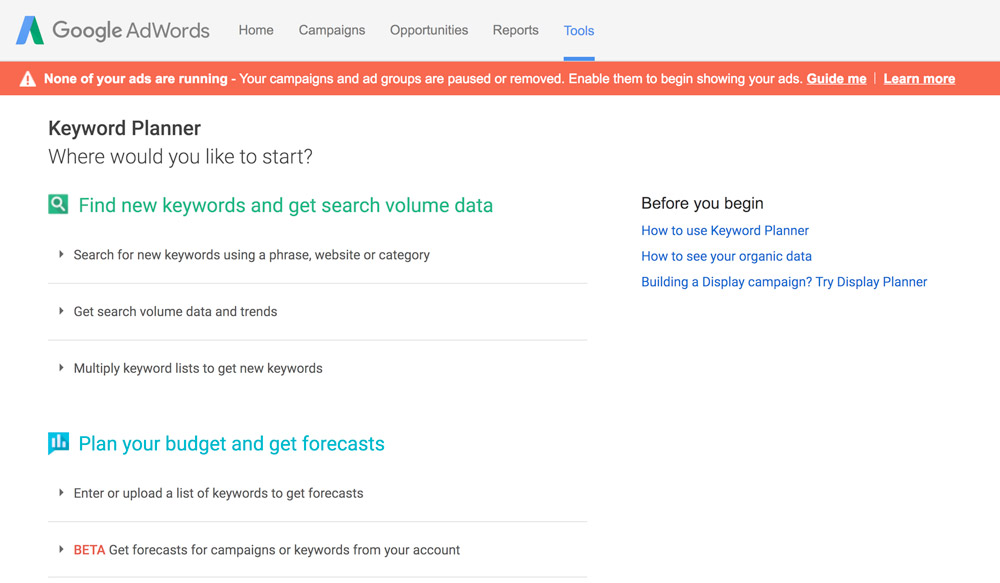Aside from a bricks and mortar high street shop window, which lets face it not all businesses have, a website is your store front and certainly one of the best tools in your arsenal to generate more work.
But like all tools there are those that are well designed and built and there are others that cut the odd corner and don’t fulfil their purpose.
So why are some websites better than others? And what does better really mean?
In answer to the first part of that question, there are – in very simplistic terms – 4 general cornerstones that will impact how good a website is:
1) Research & Planning
2) Content
3) Design & Build
4) Ongoing Content & Link Building
[thrive_lead_lock id=’18927′]
1) Research & Planning
Firstly a well-researched web project is essential to provide your customers with a website that fits their needs, with relevant information and functionality that they require. It’s also vital to research what your competitors are doing, what keywords they are ranking for how they are achieving this.
To help you do this, we advise that you use Google’s FREE Keyword Panner Tool.
This process provides the building blocks for the website’s information architecture, the content that will be on the site and the overall user experience (UX).
2) Content
So you’ve done your research, you know what content your customers are looking for and you know what your competitors are ranking for. This knowledge will arm you with a framework of what is required to generate good content for your site ie. topics, words, images and videos that your customers will find engaging.
As the success of a website will normally be measured by the work it generates, the best way of doing that is initially by getting found in the search rank. And the best way of doing that is through good content, which makes this process such an essential part of the project.
3) Design & Build
Once you’ve established what content your site will contain, the user experience and design comes into play – ie. how all that content will be served to your customers.
A good website should be easy and pleasurable to use with mobile responsive technology as standard. The content should be designed in such a way that your customers will find it easy to browse and find what they are looking for, leading to lower bounce rates (people dropping off the site), which ultimately mean more conversions of sales or more enquiries.
Finally, once you know how your website will inform your customers and how it will look, it’s time to build and code it right. This is the technical part and done right, the site will be quick to load, use the right technical language to inform search engines what it’s about, and what bits are most important. In doing this, search engines will ensure they crawl and index all the content and factor this in to rank the site against its competitors.
The technical build is a very important step and crucial for SEO (search engine optimisiation). Building a website in line with Google’s technical recommendations is essential to achieving a better search rank, so if you don’t know how to do this, or are confident that your existing web developer knows, then it’s time to farm it out to somebody who does.
Key elements to consider here are indexable content, keyword usage, title tags, meta tags, meta descriptions, URL structure, alt tags, heading tags, canonicalisation, speed, robots.txt, mobile optimisation, https and the sitemap.
Sounds technical? It is! That’s why any marketing agency worth their salt will only let seasoned developers near any web project.
A great tool here for reviewing your website’s technical SEO is Google Search Console. If you have a Google account you can register your site to Search Console, which does a fabulous job of informing you where you can do better.
Secondly, if you have the budget it’s worth letting Woorank have a glance over your site. They also offer a free trial and will provide recommendations where necessary.
4) Ongoing Content & Link Building
So, you’ve built a great site that was well researched and designed, with plenty of content at launch, and you’ve also paid a few quid for it, but still no enquiries? What a waste of time and money right?
Well, actually no. Just because you’ve followed all those steps and paid plenty of attention to each of them will it mean you will rank at the top of Google and enquiries will be flooding in. This is almost never the case because of how competitive the online space is and how many factors search engines consider in search rank.
Take this analogy. A well built website is no different to a well built, fully stocked bricks and mortar shop or office. What’s there is great, but it doesn’t take into consideration all the other shops in the area that have been there for years, that everybody knows and talk about. So you need to work hard at letting people know where you are and what you’re about, so you put up signs, build roads and make general noise to get people in. And the same can be said for a website.
So here’s where the second content cornerstone comes into play – ongoing content, followed by link building.
After your site has launched it’s vital to keep plugging away at creating useful pages, posts, videos, etc. that your customers, or anyone for that matter, will continue to read, possibly link to, and that search engines will index when they crawl.
This helps search engines build a gradual bigger picture of what you’re all about that helps improve your rank over time. You’re playing catch up with all those competitors who are already doing this and have done so for years, so it’s essential to put in double the effort of everybody else to gain any traction and see results.
Once you have your content in place, then it’s time to start shouting about it. Building a list of relevant news websites, blogs and potential complementary partners who may be interested in your content is essential to generating back links.
Research where your competitors are getting their links using a tool like SEMrush. You can then add these websites to your backlink target list.

Once you have your target backlink list, email the webmasters of each site and tell them about your content that could be of relevance to their audience. You will find that in many cases, as long as your content is relevant to their audience, then they will push it out on their website and backlink to your website.
The more quality backlinks you can generate to your website, will positively impact its search rank so repeating this process is vital with each piece of new content.
Social media is also great place to gain exposure and drive website traffic, especially if you have a good following. If not then leveraging exposure via paid search is a great way to hit a larger audience.
Don’t forget to test how well your content is received by your audience by analysing the results in Google Analytics.
Conclusion
So, you’ve got loads of great content, a well researched, designed and built site, but the results are still disappointing? The question then at this point is how long have you given it?
Be patient. SEO is a long, continuous process – we’re talking months. You may start to see some results from as little as 3 months, but if you aren’t budgeting for the long haul – 6-12 months at least, then you aren’t giving it long enough.
Done properly SEO should be highly prioritised as an ongoing investment. Once a website is ranking and does a good job of lead generation, it truly becomes one of the best ROIs a marketer or business can have.
[/thrive_lead_lock]
Need help with your marketing? Contact us below and we’ll get back to you in a jiffy.







